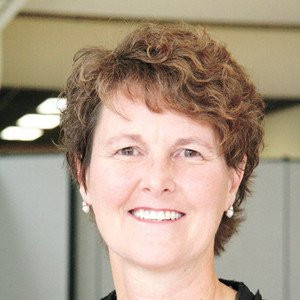K-12 Spending per Student by State
Tuesday, May 03, 2016
When it comes to state funding of public schools, it's clear that not all states are created equal. For a variety of reasons, such as the prevalence of successful businesses or the median income in a given area, spending on K-12 students varies greatly from state to state, or even county to county. A decrease in public school funding affects student and faculty alike, as budget cuts often bring about layoffs.
Using data from the National Center for Education Statistics, StartClass has ranked each state based on K-12 spending per student. Data was reported in January 2016 and reflects the 2012-13 school year. The values reported are adjusted for the cost of living in each state, and spending data from the previous two years has been included and adjusted for inflation.
On average, each state spent $10,763 per student in 2012-13, a 3.5 percent decrease from 2010-11. Wisconsin experienced the biggest two-year drop in spending, down 10.5 percent, but the state landed outside the bottom 15 in spending per student.
GET THE LATEST BREAKING NEWS HERE -- SIGN UP FOR GOLOCAL FREE DAILY EBLAST#50. Utah
2012-13 spending per student: $6,991
Percent change from 2010-11 to 2012-13: -4.56 percent
#49. Arizona
2012-13 spending per student: $7,421
Percent change from 2010-11 to 2012-13: -7.96 percent
#48. Nevada
2012-13 spending per student: $7,431
Percent change from 2010-11 to 2012-13: -8.82 percent
#47. Idaho
2012-13 spending per student: $7,512
Percent change from 2010-11 to 2012-13: -5.28 percent
#46. California
2012-13 spending per student: $8,050
Percent change from 2010-11 to 2012-13: -3.27 percent
#45. Colorado
2012-13 spending per student: $8,124
Percent change from 2010-11 to 2012-13: -5.45 percent
#44. Mississippi
2012-13 spending per student: $8,455
Percent change from 2010-11 to 2012-13: -2.13 percent
#43. North Carolina
2012-13 spending per student: $8,512
Percent change from 2010-11 to 2012-13: -3.57 percent
#42. Hawaii
2012-13 spending per student: $8,635
Percent change from 2010-11 to 2012-13: -5.89 percent
#41. Florida
2012-13 spending per student: $8,710
Percent change from 2010-11 to 2012-13: -8.75 percent
#40. Oregon
2012-13 spending per student: $9,092
Percent change from 2010-11 to 2012-13: -7.78 percent
#39. Texas
2012-13 spending per student: $9,282
Percent change from 2010-11 to 2012-13: -9.1 percent
#38. Oklahoma
2012-13 spending per student: $9,421
Percent change from 2010-11 to 2012-13: -0.9 percent
#37. South Dakota
2012-13 spending per student: $9,589
Percent change from 2010-11 to 2012-13: -7.66 percent
#36. Washington
2012-13 spending per student: $9,618
Percent change from 2010-11 to 2012-13: -3.5 percent
#35. Alabama
2012-13 spending per student: $9,641
Percent change from 2010-11 to 2012-13: -3.92 percent
#34. Georgia
2012-13 spending per student: $9,703
Percent change from 2010-11 to 2012-13: -5.86 percent
#33. Indiana
2012-13 spending per student: $9,814
Percent change from 2010-11 to 2012-13: -2.69 percent
#32. New Mexico
2012-13 spending per student: $9,854
Percent change from 2010-11 to 2012-13: -5.32 percent
#31. Wisconsin
2012-13 spending per student: $10,169
Percent change from 2010-11 to 2012-13: -10.53 percent
#30. Kentucky
2012-13 spending per student: $10,191
Percent change from 2010-11 to 2012-13: -3.96 percent
#29. Arkansas
2012-13 spending per student: $10,367
Percent change from 2010-11 to 2012-13: -4.02 percent
#28. Kansas
2012-13 spending per student: $10,428
Percent change from 2010-11 to 2012-13: -2.4 percent
#27. Montana
2012-13 spending per student: $10,556
Percent change from 2010-11 to 2012-13: -4.95 percent
#26. Iowa
2012-13 spending per student: $10,609
Percent change from 2010-11 to 2012-13: +0.41 percent
#25. Missouri
2012-13 spending per student: $10,662
Percent change from 2010-11 to 2012-13: -2 percent
#24. South Carolina
2012-13 spending per student: $10,732
Percent change from 2010-11 to 2012-13: +1.32 percent
#23. Minnesota
2012-13 spending per student: $10,848
Percent change from 2010-11 to 2012-13: -0.93 percent
#22. Virginia
2012-13 spending per student: $10,851
Percent change from 2010-11 to 2012-13: +1.07 percent
#21. Tennessee
2012-13 spending per student: $11,010
Percent change from 2010-11 to 2012-13: -1.48 percent
#20. Michigan
2012-13 spending per student: $11,068
Percent change from 2010-11 to 2012-13: -5 percent
#19. West Virginia
2012-13 spending per student: $11,605
Percent change from 2010-11 to 2012-13: -10.19 percent
#18. Maine
2012-13 spending per student: $11,939
Percent change from 2010-11 to 2012-13: -3.84 percent
#17. Illinois
2012-13 spending per student: $11,964
Percent change from 2010-11 to 2012-13: +1.27 percent
#16. Louisiana
2012-13 spending per student: $12,114
Percent change from 2010-11 to 2012-13: -6.73 percent
#15. Ohio
2012-13 spending per student: $12,257
Percent change from 2010-11 to 2012-13: -5.43 percent
#14. New Hampshire
2012-13 spending per student: $12,325
Percent change from 2010-11 to 2012-13: -0.9 percent
#13. North Dakota
2012-13 spending per student: $12,356
Percent change from 2010-11 to 2012-13: +1.85 percent
#12. Nebraska
2012-13 spending per student: $12,361
Percent change from 2010-11 to 2012-13: -4.12 percent
#11. Delaware
2012-13 spending per student: $12,526
Percent change from 2010-11 to 2012-13: +4.65 percent
#10. Maryland
2012-13 spending per student: $13,043
Percent change from 2010-11 to 2012-13: -3.48 percent
#9. Massachusetts
2012-13 spending per student: $13,095
Percent change from 2010-11 to 2012-13: +0.2 percent
#8. Rhode Island
2012-13 spending per student: $13,176
Percent change from 2010-11 to 2012-13: -4.81 percent
#7. Connecticut
2012-13 spending per student: $13,427
Percent change from 2010-11 to 2012-13: +2.03 percent
#6. Pennsylvania
2012-13 spending per student: $13,581
Percent change from 2010-11 to 2012-13: -1.89 percent
#5. Vermont
2012-13 spending per student: $14,526
Percent change from 2010-11 to 2012-13: +12.32 percent
#4. Wyoming
2012-13 spending per student: $14,644
Percent change from 2010-11 to 2012-13: -4.44 percent
#3. New York
2012-13 spending per student: $15,139
Percent change from 2010-11 to 2012-13: -1.03 percent
#2. New Jersey
2012-13 spending per student: $15,183
Percent change from 2010-11 to 2012-13: +5.02 percent
#1. Alaska
2012-13 spending per student: $15,841
Percent change from 2010-11 to 2012-13: +4.47 percent
American K-12 Spending per Student by State
Research More About Public Schools at StartClass
Related Slideshow: RI Experts on the Biggest Issues Facing Public Education
On Friday November 22, the Hassenfeld Institute for Public Leadership at Bryant University, the Latino Policy Institute of Roger Williams University, the Rhode Island Association of School Committees, the Providence Student Union, and RI-CAN: Rhode Island Campaign for Achievement Now will host Rhode Island leaders in the public and nonprofit sectors for a symposium on "the civil rights issue of the 21st century, adequacy and equity and the State of Education in Rhode Island."
Weighing in on the the "three biggest factors" facing education in the state today are symposium participatnts Gary Sasse, Founding Director of the Hassenfeld Institute for Leadership; Christine Lopes Metcalfe, Executive Director of RI-CAN; Anna Cano-Morales, Chairwoman of the Board of Trustees, Central Falls Public Schools and Director, Latino Policy Institute at Roger Williams University; Tim Duffy, Executive Director, RI Association of School Committees; and Deborah Cylke, Superintendent of Pawtucket Public Schools.
Related Articles
- NEW: Fundraiser for Barrington High School Graduate Battling Cancer This Monday
- Good Samaritan Act, RhodeWorks & Charter Schools: This Week at The State House
- Prov. Public Schools Closed, Parking Ban Set to Begin at 2 a.m. on Friday
- Head of School at Moses Brown Does it Again - to Adele’s “Hello” - School Cancelled
- NEW: Providence Public Schools Issue Snow Cancellation for Monday February 8
- Brown Med School Professor to Hold Lecture on Ebola at Salve Regina
- Two Prov Elementary Schools Receive $40K to Expand Learning Initiatives
- St. George’s, One of the Richest Prep Schools, Faces Tens of Millions in Lawsuits for Sexual Abuse
- College Admissions: The Real Danger in Being a High School Athlete
- NEW: Oliveira Blasts Elorza, Resigns from Providence School Board
- Catholic Church Admits Prov. School Aide Arrested for Sexual Assault Worked at Cathedral
- 17 Schools Honored as RI Commended Schools
- Mount Alum Issues Open Letter on YouTube Against School’s Transgender Discrimination
- EDITORIAL: RI Senate Says “No” to Enjoying a Del’s at High School Games, Do They Read the Bills?
- RI Bill Could Ban Promotion of Del’s, Calamari, and Maybe Even Coffee Milk, at Schools and Events
- Listen to Your Mother Set for Gordon School Show on April 28
- RI’s Still Dissatisfied About Direction, Supports Charter Schools, Tourism and Legalized Marijuana
- Alvarez High School Guidance Counselor Tedeschi to Attend Educators Event at White House
- Powdered Alcohol, Criminal Injuries & Healthy School Lunch: This Week at the State House
- Providence School Board Names Next Superintendent
- The Wolf School to Host Open House on Friday, April 8
- Providence Declares Parking Ban and Closes Schools
- Guest MINDSETTER™ Mendelsohn: Assistant Principals-The Versatile School Leaders
- Raimondo, Moffit Host College Signing Day Celebration at Central High School








